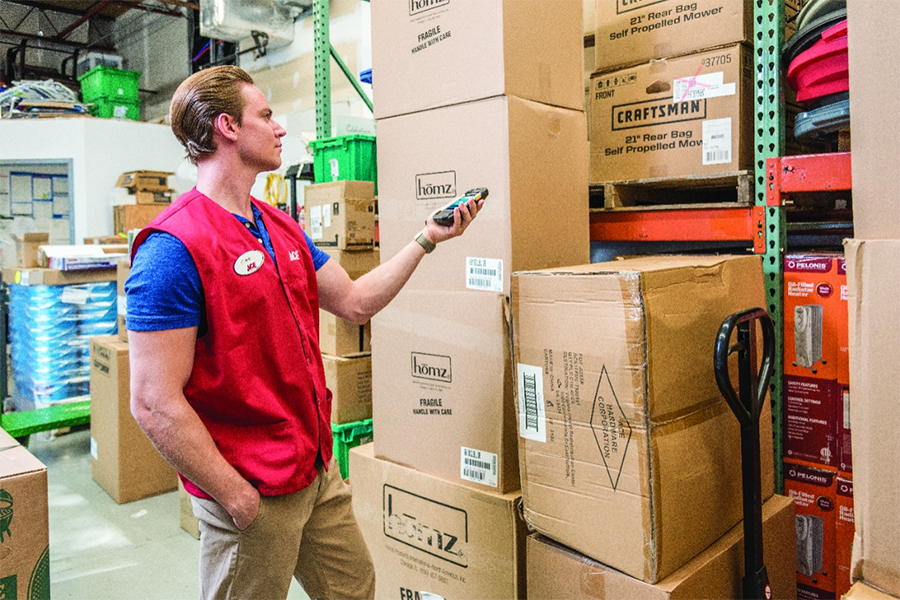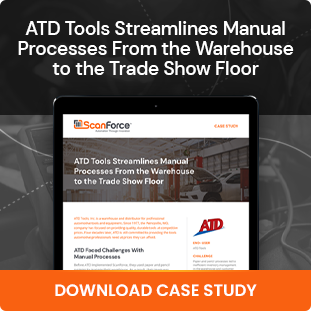Three Most Common Types of Thermal Transfer Ribbon
In today’s digital age, where labeling plays a crucial role in various industries, choosing the right type of thermal ribbon is essential to ensure the quality and durability of your thermal labels. With many options available, it can be overwhelming to navigate through the choices for thermal transfer label printing.
There are three basic types of thermal ribbons available for most thermal transfer printers: full wax ribbons, wax-resin ribbons, and full-resin ribbons. By understanding the unique characteristics and applications of each type, you will be equipped with the knowledge necessary to make an informed decision that aligns perfectly with your specific printing needs. So, let’s dive into these types of thermal transfer ribbons to help maximize label printing for Sage 100 or Sage Intacct!
If you’re interested in learning more about warehouse best practices, we shared tips on Key Considerations for Effective Warehouse Design & Layout and Creating a Warehouse Location Numbering Scheme.
Full Wax Key Facts
- The most common type of thermal transfer ribbon
- Recommended for uncoated paper stock
- Less durable, but also less expensive
- Good for shipping, shelf, bin, retail, and warehouse labels
The most common type of thermal transfer ribbon is the full wax ribbon. Wax thermal transfer ribbons are typically recommended for use on uncoated paper stock. While full wax ribbons provide a less durable print than other options, they are also considerably less expensive.
A full wax thermal transfer ribbon is coated with wax-based ink. During the printing process, heat from the printer’s printhead will melt the wax-based ink and transfer it to the surface of the thermal transfer labels, forming the desired printed area.
Full wax ribbons require a lower melting temperature than its counterparts and are ideal for paper-based materials. Applications well suited for full wax ribbons include shipping labels, shelf and bin labels, retail labels, and warehouse labels.
Wax-Resin Key Facts
- More durable printed area than full wax
- More resistant to heavy handling, chemicals, and temperature changes
- Ideal for both standard and weatherproof thermal transfer labels
- Good for barcode, shipping, prescription pharmaceutical, and shelf labels
While less cost-effective than full wax ribbons, wax-resin ribbons are very popular because of the significantly more durable printed area.
The printing process is very similar to the full wax printing process, where a hybrid of wax and resin-based ink is melted and transferred onto the surface of the labels. The printed area will be a sharp, clear image that is much more resistant to heavy handling, chemicals, and temperature changes.
The melting temperature required for wax-resin ribbons falls between full wax ribbons and full resin ribbons. Wax-resin ribbons are ideal for various material types, from uncoated paper stock to coated, glossy paper stock and even synthetic weatherproof label materials. Wax-resin thermal ribbons have been tested extensively with our thermal transfer products and will provide a high-quality image. Applications well suited for wax-resin ribbons include barcode labels, shipping labels, pharmaceutical and prescription labels, and shelf and bin labels.
Full Resin Key Facts
- Most expensive ribbon type
- For use on non-paper, synthetic stocks
- Most durable of the ribbon types
Full resin thermal ribbons will be considerably more expensive than full wax ribbons or wax-resin ribbons. This ribbon type is generally intended for use on non-paper, synthetic stocks and will offer the highest durability of any ribbon type.
Considering the cost of pure resin ribbons, it can safely be considered overkill even when printing on our Weatherproof Thermal Transfer material. However, the extreme durability offered makes pure resin ribbons a strong choice for labeling sensitive medical applications and chemicals. It should likely be bypassed for the more economical options detailed above for other applications.
Need more help with label printing for Sage 100 or Sage Intacct? We’ve consulted with hundreds of warehouse operations across a broad range of industries. Contact us for assistance!




